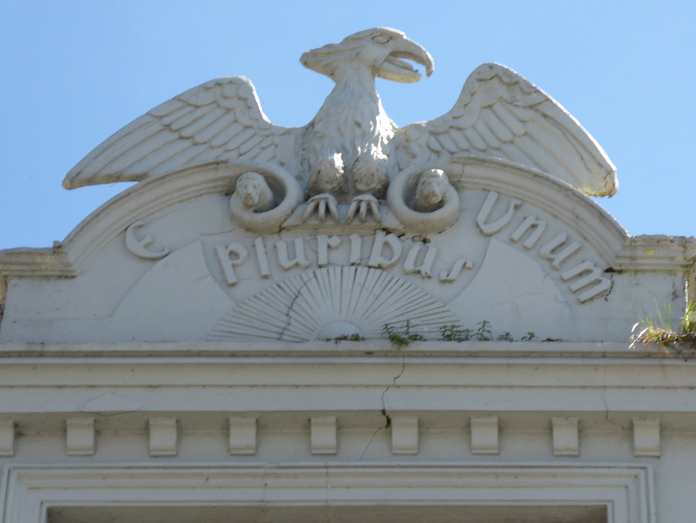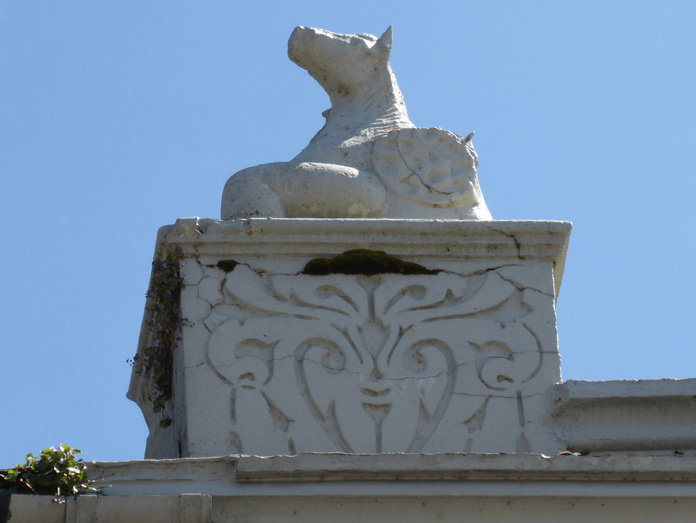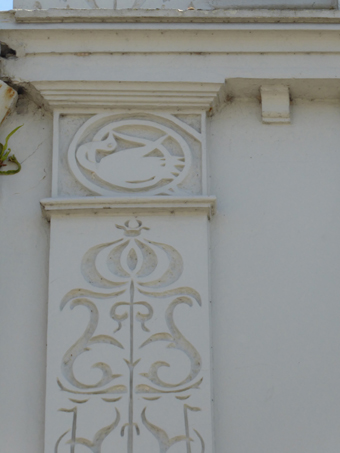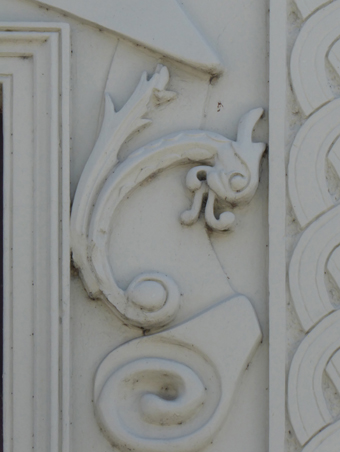Building of the Month - June 2018


Pat McAuliffe (1846-1921), builder and plasterer, lived and worked in Listowel, County Kerry, and, in a long career spanning from the 1870s to the 1910s, applied plaster, or stucco, to shopfronts and entire façades in the north Kerry and west Limerick region. McAuliffe developed an ambitious and often exuberant style blending a variety of devices culled from the vocabulary of classical architecture – architraves and archivolts; consoles and cornices; pillars and pilasters – with an eclectic mix of Art Nouveau, Byzantine, Celtic and freestyle motifs.
An examination of surviving artefacts and tools from McAuliffe’s workshop reveals that the artist sought to complete as much works as possible off site. Using a range of bespoke moulds, embossed quoins, stringcourses and, in some cases, large sculptural pieces were precast in sections in the workshop for later assembly on the façade. Two-, three- and four-part moulds accommodating awkward undercut sections were necessary for many of the capitals and for complex three-dimensional centrepieces. The individual casts were then assembled on site with hard bonding French fondue cement and metal brackets used to secure heaving pieces in place. McAuliffe enjoyed staging the drama of the installation, temporarily concealing the front of the building from public view behind a canvas “curtain” suspended from the scaffold. The precast pieces in place, McAuliffe would carve out blocks of cement or plaster on site, finessing arabesques and zoomorphic intricacies. With all of the embellishments and lettering completed, the new façade was revealed by the drawing back of the “curtain” and the removal of the scaffold frame.
The Emporium, Church Street, Listowel, was built in the 1840s and the house, a single bay wide and three storeys high, was once home to the post office of the town. McAuliffe’s work on the façade dates to circa 1905.

The Great Seal, an icon of nationalist unity, takes the form of an eagle with outspread wings above the Latin motto E Pluribus Unum (“Out of Many, One”). This motto, found on the upper floors of several of McAuliffe’s façades, declares a nationalist propaganda for the townspeople to, quite literally, look up to. Two horses rest on arabesque plinths on either side of the eagle. Close inspection reveals evidence of wings upon their midriffs to lift them up from earthly confines, thus denoting the mythical Pegasus, but such delicate detailing has weathered considerably over the years with only mere traces now surviving.

The Great Seal is the climax of an elaborate architectural composition, at once rigidly structured and fluidly detailed, below. The uppermost floor features arabesque decoration incised into low-relief pilasters on either side of an off-central window. Each pilaster finishes in a capital with more incised decoration resembling a stylised flamingo and paired swans. The floor below features Celtic guilloche pilasters and zoomorphic detail on either side of a ribbon-like panel which once carried the name EMPORIUM in high relief. The plaster detail is also present on the ground floor where an egg-and-dart cornice surmounts a scroll fascia shopfront.

